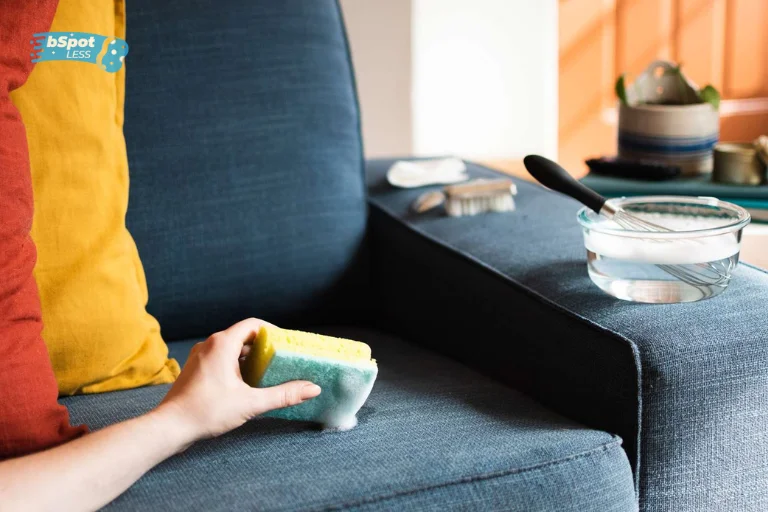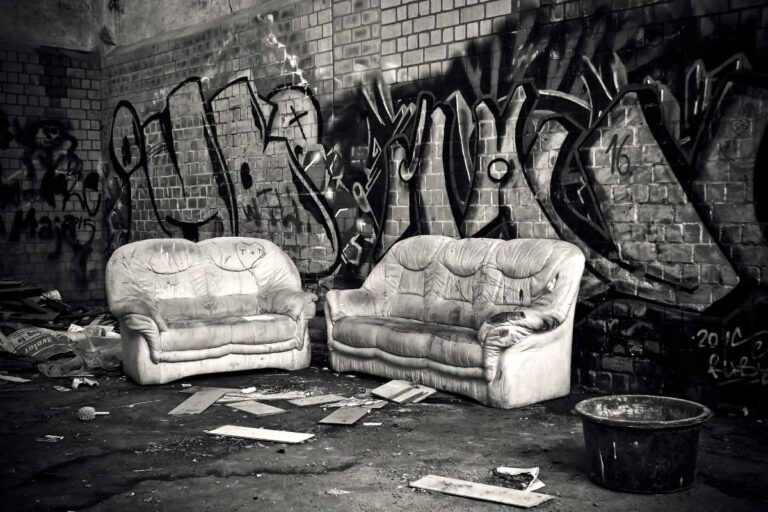If you’ve ever spilled oil on your upholstery, you know how stubborn and unsightly these grease stains really can be. Luckily, with the right techniques and products, removing oil stains from upholstery is a manageable task.
In this article, we’ll explore a range of effective methods to help you tackle these pesky stains and restore your upholstery to its former glory. Whether you’re dealing with a small spot or a large spill, we’ve got you covered with easy-to-follow steps and expert tips for successful oil stain removal.
Keep reading to learn how to banish those stains for good!
Gather the Necessary Supplies
When it comes to removing oil stains from upholstery, it is important to have the right supplies on hand. In addition to clean white cloths, you will also need a dry-cleaning solvent, baking soda or cornstarch, club soda, dish soap re-washing solution and a stain remover or laundry detergent.
Be sure to also have an absorbent towel on hand to dry the area when finished. Once you have all the necessary supplies, you can begin the process of removing the oil stain from your upholstery.
Identify the Type of Fabric
Once you have gathered the supplies you need, it is important to identify the type of fabric you are working with.
Different fabrics require different cleaning solutions and techniques to get oil off, so it is essential to make this distinction before proceeding. Oil stains can often be difficult to remove, but using the right cleaning solution and technique can make all the difference.
Fortunately, there are various solutions available for different types of fabrics. For example, if your upholstery is made of cotton or polycotton, you can use a Vanish Napisan Oxi Advance Multi Power Powder.
On the other hand, if your upholstery is made of wool or a combination of wool and synthetic fibers, you should use a dish-washing solution or a product like Tide Laundry Stain Remover with Oxi.
Test a Small, Hidden Area First
Before proceeding with any cleaning solution, it is important to test a small, hidden area of grease stain on the upholstery first. This will help you to determine whether the fabric is colorfast, or if it will fade or discolor.
If the fabric is colorfast, you can proceed with the cleaning process. If it is not colorfast, you should consult a professional cleaner for advice on how to remove the stain.
Once you’ve determined that the fabric is safe to clean, you are ready to begin removing the oil stain from your upholstery.
Blot the Oil Stain
Once you’ve identified the type of fabric, it’s time to start blotting the oil stain. Before you do this, be sure to remove any excess oil from the surface of the fabric.
You can do this by gently dabbing the fabric with a clean cloth or paper towel. Once the excess oil and grease stains has been removed, take a clean cloth and blot the stain until no more oil is being transferred to the cloth.
Be careful not to scrub, as this could damage the fabric.
Apply the Cleaning Solution

Once you have identified the type of fabric and tested a small, hidden area, it’s time to apply the cleaning solution. Depending on the type of fabric, you may be able to use a commercial upholstery cleaner.
For fabrics such as cotton or polycotton, you can use a liquid dish soap after-washing solution or Vanish Napisan Oxi Advance Multi Power Powder for stain removal. Alternatively, you can also try using baking soda or cornstarch to absorb the oil from the stain.
Let the baking soda or cornstarch sit on the stain for 10 to 15 minutes before vacuuming it up. For tougher oil stains, use a clean white cloth and sponge the stain with a dry-cleaning solvent.
Make sure to test a hidden area first before applying any cleaning solutions to prevent any discoloration of the fabric.
Scrub the Stain Gently
Once the cleaning solution has been applied to the upholstery furniture the oil stain, it is time to scrub the stain gently. Use a soft-bristled brush to work the cleaning solution into the fabric in a gentle, circular motion.
This will help to loosen and remove the oil from the upholstery. Be sure not to scrub too hard as this can damage the fabric.
Rinse the area with cold water, and then blot again with an absorbent towel to remove any excess moisture.
Rinse With Cold Water
After you have blotted the stain and applied the cleaning solution, it’s time to rinse the stained area off with cold water. This will help to remove any remaining residue and help to neutralize the cleaning solution.
Make sure to use a clean cloth or sponge when rinsing the stain. Rinse until you can no longer see or smell the cleaning solution.
Once you’ve finished rinsing, use an absorbent towel or rag to blot up the excess water.
Blot Again to Remove Excess Moisture
Once you have done all of the necessary cleaning steps, it is important to blot the upholstery again with cold water to remove any excess moisture. This will help ensure that the oil stain has been completely removed and that no residue is left behind.
It is important to avoid soaking the upholstery fabric as this may cause damage. Using a paper towel or an absorbent cloth to blot the area with warm water can help reduce the amount of water used and prevent water damage.
Apply a Stain Remover or Laundry Detergent
Once you have tried all of the above steps to remove the stain, you may need to apply a stain remover or laundry detergent to the affected area.
Vanish Napisan Oxi Advance Multi Power Powder is a great option for removing grease and oil stains from cotton and polycotton fabrics. If your fabric is made of natural fibers, such as wool or silk, use a mild dish-washing soap solution such as Tide Laundry Stain Remover with Oxi.
Make sure to test this product on a small, hidden area first before applying it to the entire stain.
Dry With an Absorbent Towel
Once the stain has been removed, it is important to dry the upholstery quickly with an absorbent towel. This will help to prevent the stain from setting in and make sure that the oil does not seep into the fibers of the upholstery.
Blot the upholstery dry with a clean, absorbent towel and then let it air dry completely. Depending on the type of fabric and the amount of oil that has been spilled, this could take several hours.
After it is completely dry, check the area to make sure the stain has been removed and that there is no residue remaining with damp cloth. If necessary, repeat the cleaning process until you are satisfied with the results..

